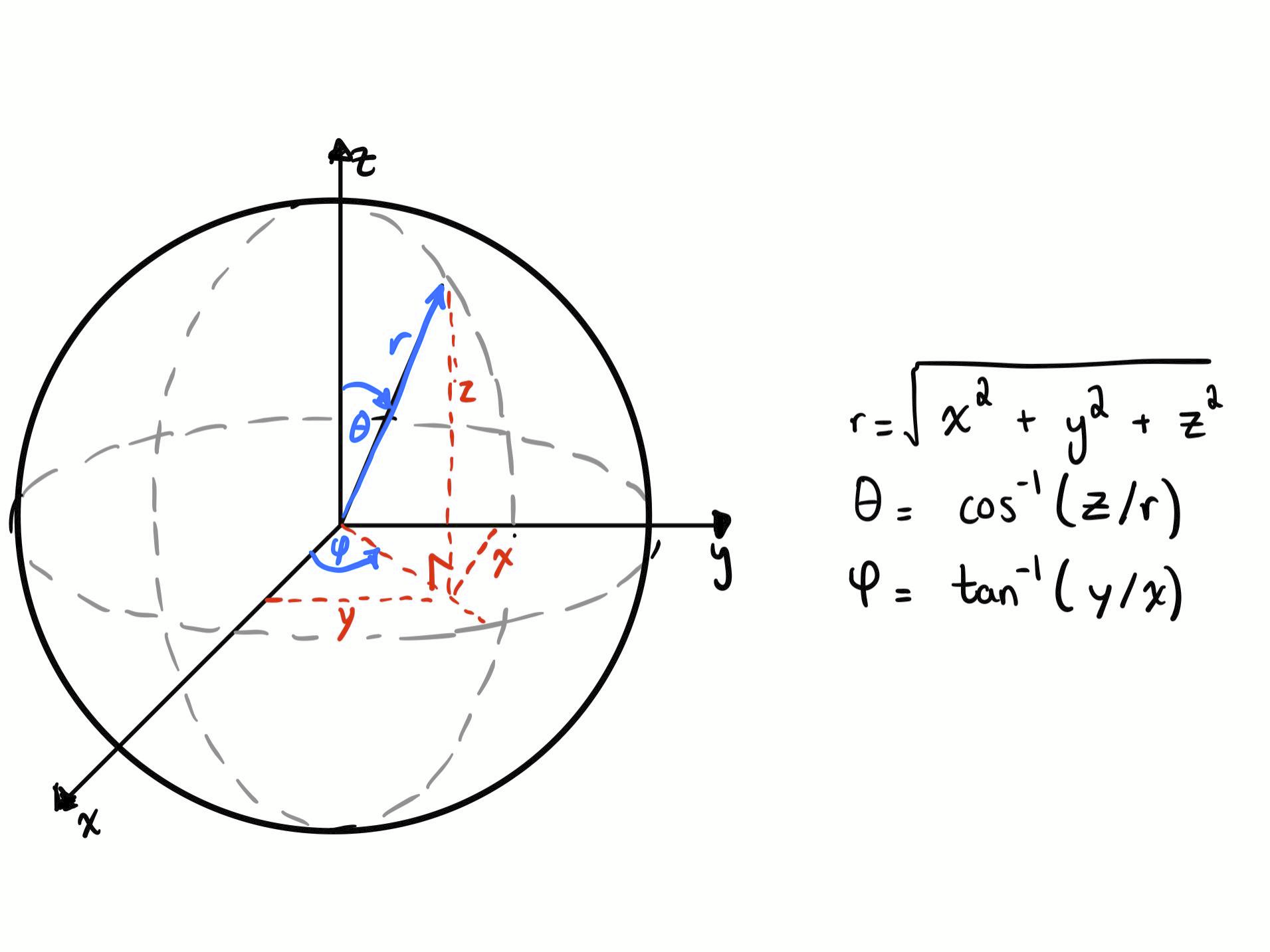Again, I'm doing brief introduction, mainly focusing only on solving the problem and analyzing the results, not much explaining will be done here.
We want to take measurements and get closer to our planet but without actually entering the atmosphere, no one likes air resistance. So we'll drop low, we can use the the radius of earth and the definition of low orbit, make a factor out of it and find then the corresponding low destination planet orbit.
Low earth orbit is a little less than one third of the earth's radius, and it's defined using the orbital period being less than a specific number (11 orbits per day if I remember correctly). We'll use that logic and push it a bit farther. One third of our destination's planet's radius is 1905.644 km above surface. So we have to be lower than that, exactly how much we'll come back to after, looking at density of air will provide us with some useful insight. But how will we reduce our height? We know that the radius of the orbit is determined by the kinetic energy of the body in orbit (we get this from the conservation of mechanical energy). So all we have to do is reduce kinetic energy and the easiest way to do that is by reducing our velocity. With this way we can just boost a tiny bit in the direction opposite to our velocity vector, and see what happens. We don't need to be as close as possible, so it's not worth risking, we have sensors on the craft that sense when the air resistance has a non-negligible effect, which then we can start over again and not brake that much. Another way one can go as low as possible, is to look at where the density of the air is <1% of the density on the surface, now we'll actually model the density next.
_______________________________________________
We calculated the mean molecular weight using this formula
\(\mu = \frac{1}{m_p}\sum ^N_{i=1} l_i \cdot m_i\)
where mp is the mass of a proton (or approximately that of a hydrogen atom), N is the total number of gasses we have, l is the percentage that gas i makes up in the atmosphere, mi is the mass of the N molecules. This way we get an average of the molecules we're working with. More discussion of this will be presented at the end of this scroll.
Inserting the numbers in we get 27.3, the number has no units because we divide AMU by AMU (atomic mass unit). What does this result mean? We have to discuss a bit. For every single point on our atmosphere where there are gasses we have average atomic weight of 27.3, which means every point is comprised of 25% of each point.
Alright so we have some equations here that we put together to make an algorithm, here's how it looks:
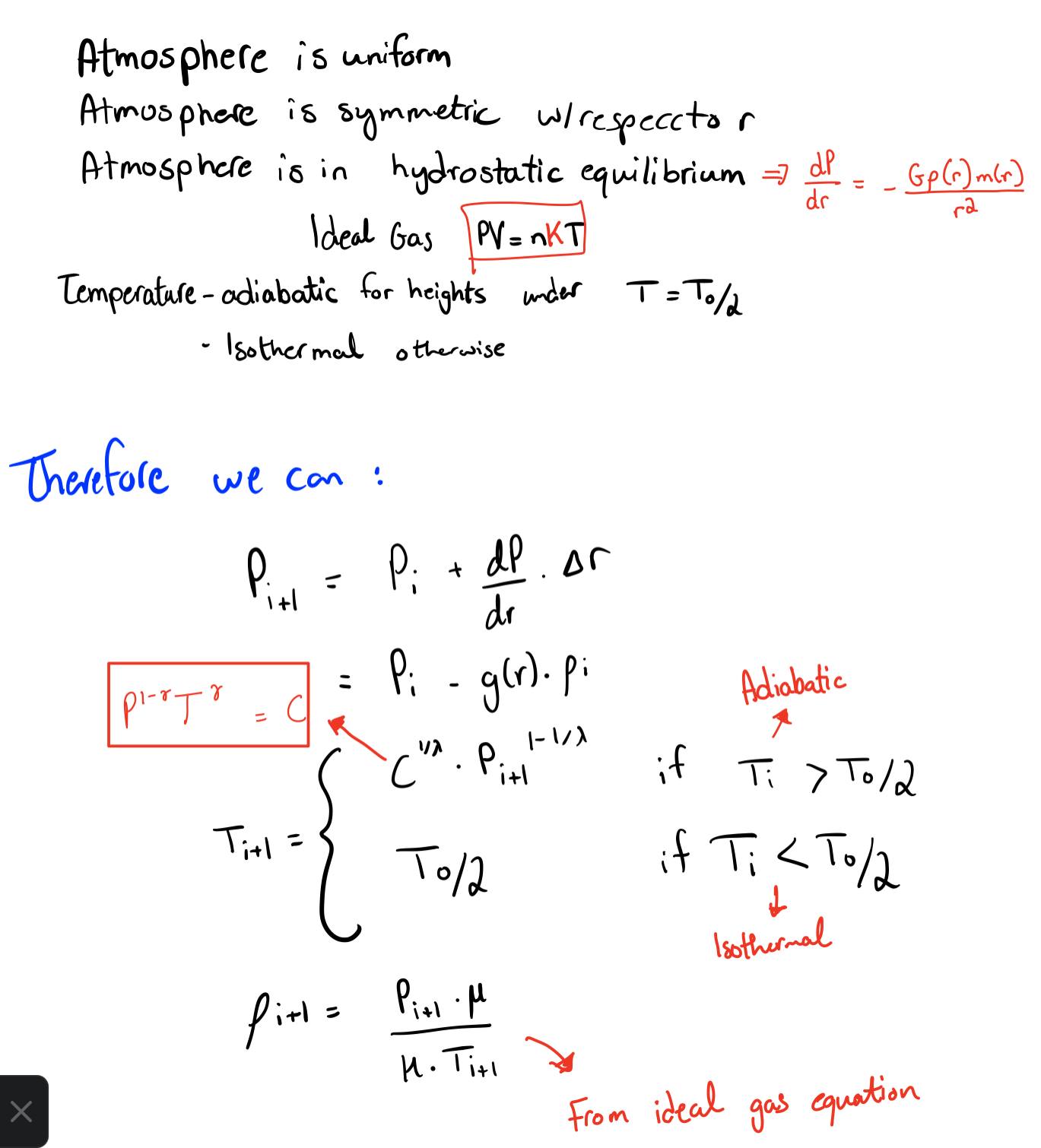
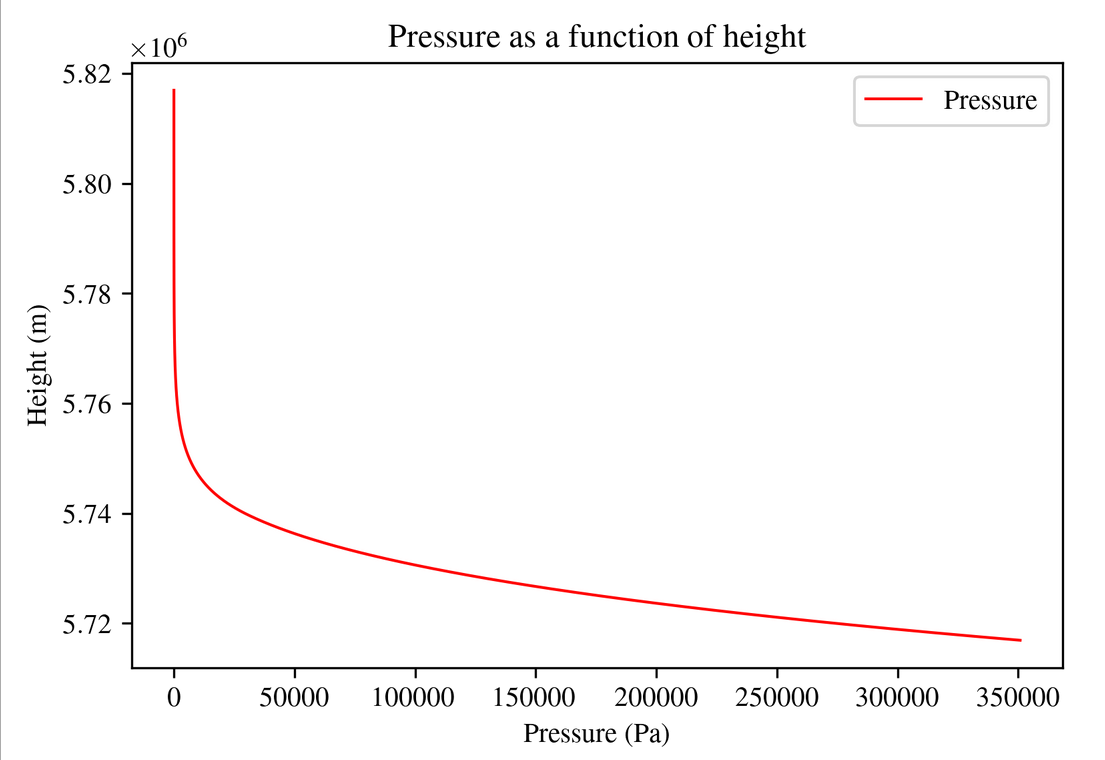
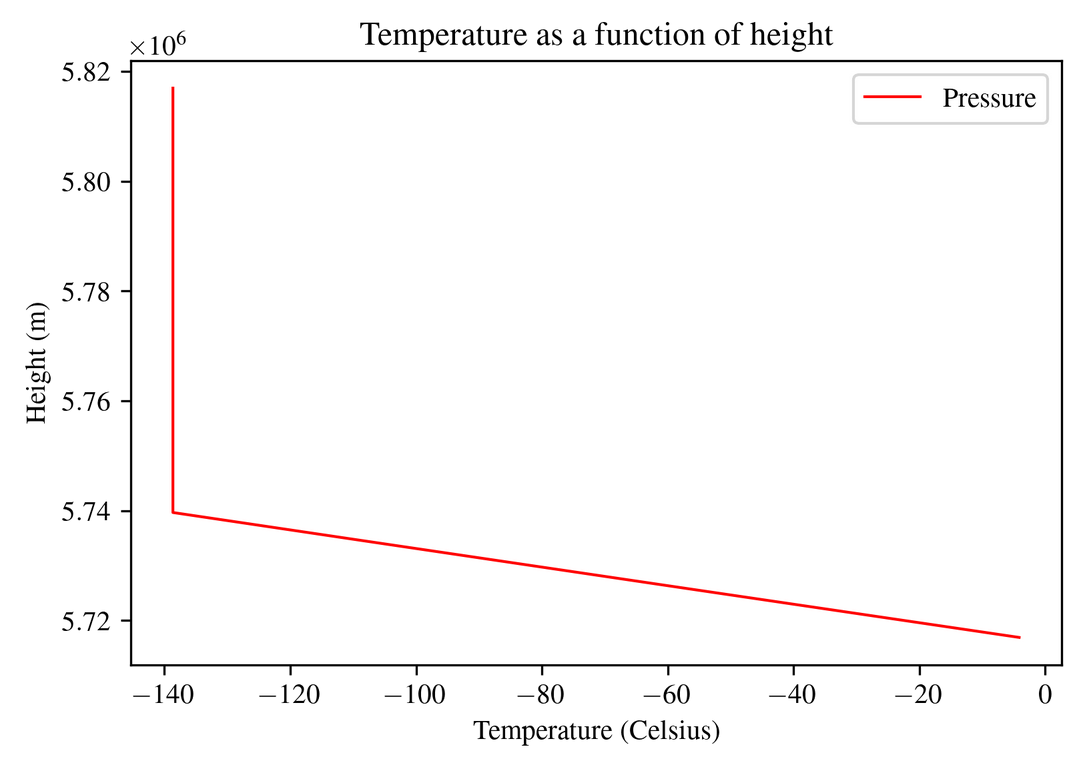
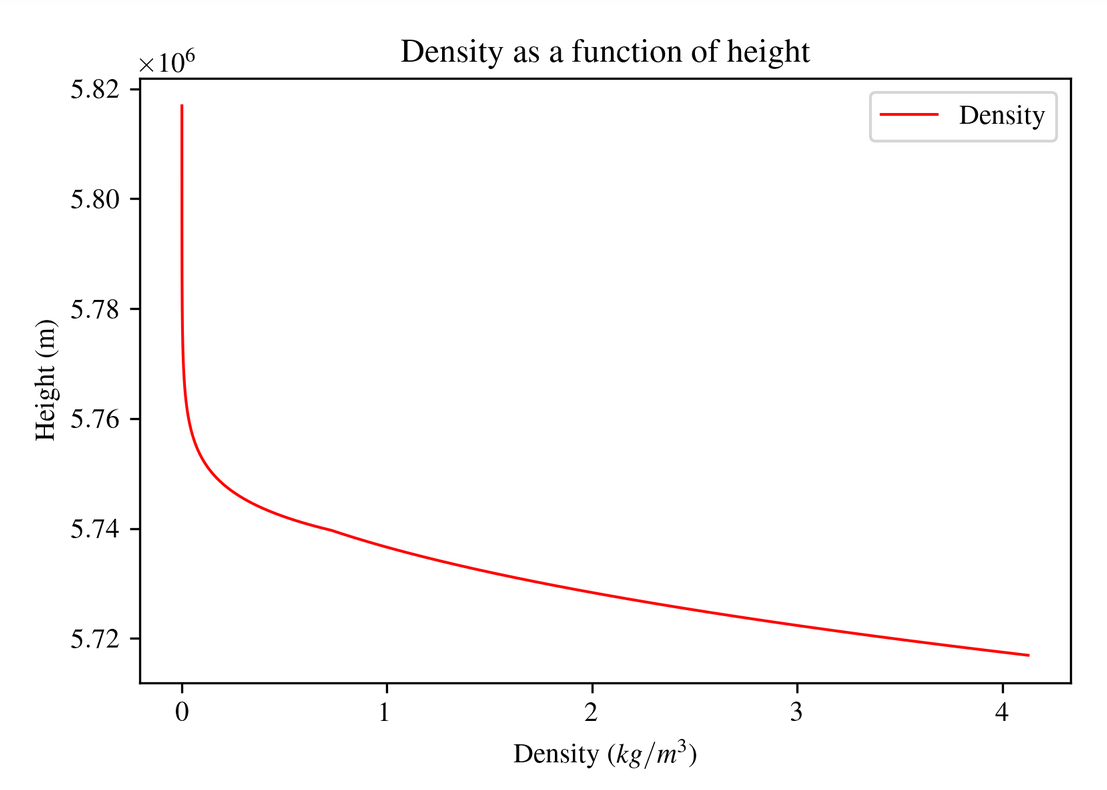
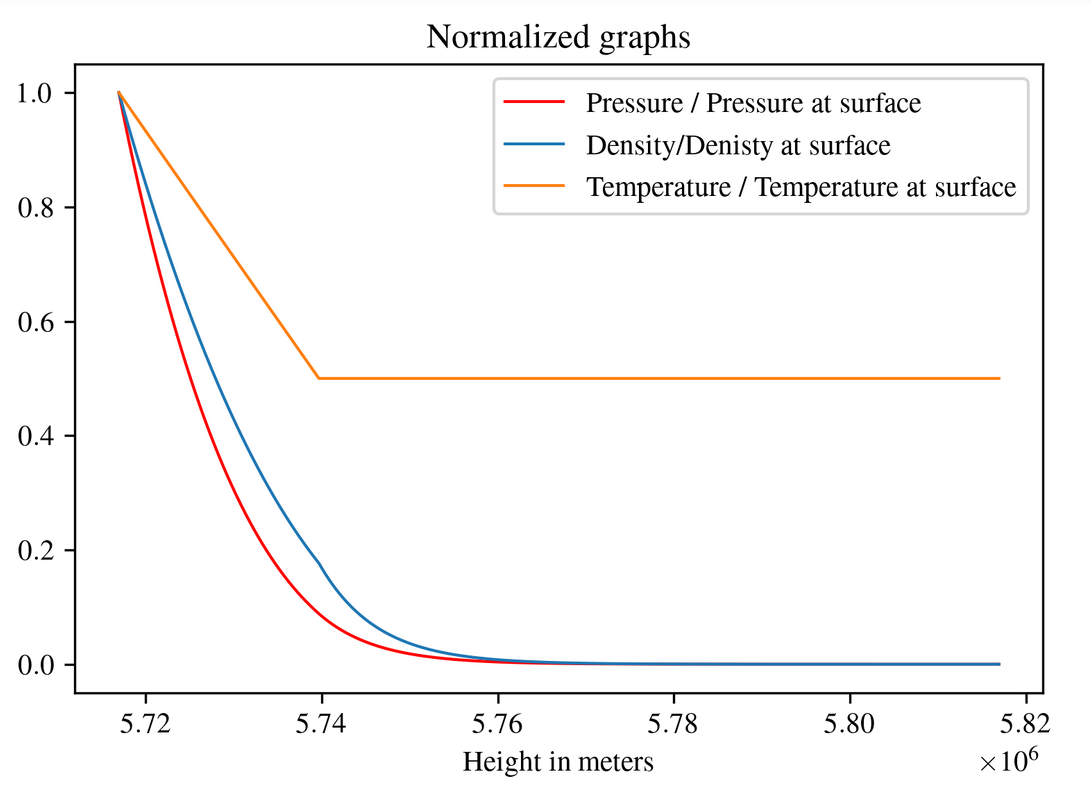
The main result
Now that we have modeled very important factors of the atmosphere, we can then interpolate the data points and even extrapolate them (extrapolating is when you find values that are outside of your dataset while interpolating is finding values that are within and between your datasets.). This way we have a density profile that allows us to know what to expect in terms of air resistance as a function of height above the planet. To make sure the interpolate function worked I simply plotted the original plot and the interpolated function plot to make sure they're more or less accurate.
Are my results consistent and realistic?
Our initial temperature has its own unrealistic and bad assumptions made, which we have calculated in another scroll. However, if the initial temperature is more or less correct then we good. Let's look compare our values to earth and see if it's even close
| Destination Planet | Planet Earth | |
|---|---|---|
|
Surface air density \(kg/m^3\) |
4.12 | 1.225 |
| Surface air pressure (Pa) | 350 000 | 100 000 |
| Surface air temperature (\(^\circ C \)) | -4 | 15 |
BREAKING NEWS: We have some firsthand footage of the surface of the destination planet (SOUND ON).
